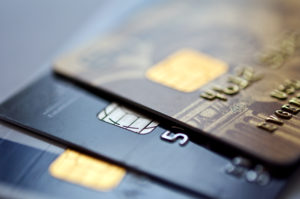
Managing fraudulent charges, retrieval requests, and chargebacks can be a struggle. But no matter what kind of  ecommerce store you operate, credit card disputes and chargebacks are guaranteed to occur at some point. To make matters worse, consumer studies show that about 86% of chargeback attempts are fraudulent in nature.
ecommerce store you operate, credit card disputes and chargebacks are guaranteed to occur at some point. To make matters worse, consumer studies show that about 86% of chargeback attempts are fraudulent in nature.
Using best practices to prevent all forms of credit card fraud is always best, but occasionally, prevention won’t be enough. For those chargeback attempts that you can’t prevent, winning chargeback disputes is a little bit art and a little bit science. But with a few tips, any business owner can learn to master it.
Disputing a charge is common in retail ecommerce, and this post will teach you everything you need to know when any given customer disputes a charge. And when prevention fails, you’ll know how to make sure you win as many chargeback disputes as possible. You can’t avoid a chargeback fee from your bank when a chargeback occurs. But you can minimize the amount of time and money you lose this unfortunate reality of retail.
By the time you finish this post, you’ll be ready to prevent most chargebacks, and for those that fall through the cracks, know how to tackle those disputes head-on.
Follow Processor Protocol
Payment processors have protocols already in place for merchants to help prevent chargeback fraud. One of the  most fundamental protocols involves maximizing security for credit card transactions by requiring the entry of an expiration date and security code from cardholders for each and every transaction.
most fundamental protocols involves maximizing security for credit card transactions by requiring the entry of an expiration date and security code from cardholders for each and every transaction.
Payment processors also need to know if you will be processing CNP (card not present) transactions. Since this changes your risk profile as a merchant, processors require permission before you begin charging cards from afar.
Use a Clear Descriptor
Clear descriptors for your company name and products will reduce the number of chargebacks. This is because it gives customers more clarity when they inspect their credit card statements, making it obvious what they purchased, and from whom. Generic or unclear descriptors for your company and products on billing statements are one of the top reasons for chargeback mistakes where a customer disputes a legitimate purchase, simply because they don’t recognize the entry on their credit card bill.
Here’s an example: Say a customer orders a pot and some soil from your online nursery. If your nursery is called “Joe’s Plants” but your actual company is called JOEHANSONSTORESLLC, your customer may be confused if they don’t see “JOES PLANTS” on their statement. Similarly, if the pot appears on the statement as a generic entry such as “CONTAINER009ZS,” the customer may believe the charge is suspicious rather than legitimate.
Document Everything
 Good record-keeping is critical for preventing chargeback fraud and disputes. One piece of documentation that will make fraudulent chargebacks much more difficult to get away with for fraudsters is an invoice or bill that the customer must sign, showing exactly what goods or services were exchanged. Paperwork that spells it all out specifically will give you the best ammunition if there is a chargeback dispute: a clear, easy-to-reference record of the entire transaction.
Good record-keeping is critical for preventing chargeback fraud and disputes. One piece of documentation that will make fraudulent chargebacks much more difficult to get away with for fraudsters is an invoice or bill that the customer must sign, showing exactly what goods or services were exchanged. Paperwork that spells it all out specifically will give you the best ammunition if there is a chargeback dispute: a clear, easy-to-reference record of the entire transaction.
Good recordkeeping in your back-end operations is the other critical aspect of thorough documentation. All of your internal sales records should include a full outline of all information for transactions, such as transaction dates, transaction amounts, any applicable taxes, and authorization information regarding the payer. With this information always ready to be accessed, gathered, and sent to your bank, you’ll be better equipped to come out on top during the dispute process.
When Customers Have Concerns, Be Timely
If customers express concerns, complains, or disputes, always respond in as timely a fashion as possible. To do so, you need to set up a clear and efficient process for addressing customer complaints.
you need to set up a clear and efficient process for addressing customer complaints.
When a customer complains about one of their charges, your payment processing partner will notify you. Once you receive this notification, act on it immediately. Your process should include these steps:
1. Identify the Source
Identify the source and look for a reason code for the chargeback. Reason codes accompany every disputed charge, and are meant tell you why the customer attempted to reverse the charge. Reason codes are often categorized either as a merchant error or as some kind of fraud attempt. However, reason codes will be exploited by scammers to attempt to paint a fraudulent chargeback as legitimate.
2. Identify Whether or Not the Chargeback is “Friendly Fraud”
 “Friendly Fraud” is where a customer intentionally disputes a charge, hoping to keep both your product and their money. Often this is due to buyer’s remorse, but there are other potential reasons that a chargeback could be legitimate: maybe their kid grabbed their phone and made the purchase, or they made the purchase using a spouse’s account without their permission.
“Friendly Fraud” is where a customer intentionally disputes a charge, hoping to keep both your product and their money. Often this is due to buyer’s remorse, but there are other potential reasons that a chargeback could be legitimate: maybe their kid grabbed their phone and made the purchase, or they made the purchase using a spouse’s account without their permission.
Most times, unfortunately, the intent of friendly fraud is malicious. In these cases, customers know they made the purchase and are just trying to see if they can get their money back. If you can identify this type of fraudulent activity, you have a chance to beat the chargeback. Successful identification and handling of friendly fraud will improve your risk profile in the eyes of banks, showing them that you aren’t disputing charges lackadaisically.
3. Fight the Chargeback
Fight the chargeback by gathering all of your evidence (more on this next), and submitting it to your merchant bank as part of your chargeback dispute.
How to Fight Chargebacks
Ever ask yourself, “How do I fight credit card chargebacks?” Follow these steps:
Gather Evidence
Gather up all your records and evidence (this is where your excellent recordkeeping habits come into play). Your evidence should include materials supporting everything that you need to show the bank in order to convince them of your side of the dispute. Gather the following evidence via computer screenshots, and highlight the relevant parts.
To take screenshots, use the “Print Screen” button on your keyboard. Then open image editing software, start a new  file, and use the “paste” function. Your screenshot should appear. You can then use the software’s editing function to highlight or circle the relevant parts in a bright color.
file, and use the “paste” function. Your screenshot should appear. You can then use the software’s editing function to highlight or circle the relevant parts in a bright color.
- Your company’s policies wherever they are displayed on your payment gateway/website, and during the buying process. This includes cancellation, refund policy, the renewal and return policy, and your website’s terms of service (ToS)
- The customer’s IP address, available from your website’s analytics tools
- As complete a collection of possible of all the web pages showing the customer’s check-out process and purchase confirmation
- Proof of delivery of the purchased merchandise to the customer
- Any ongoing use of your website or ecommerce store by the same customer (determined via activity on your site from the same IP address as the customer)
- A full payment and purchase history from the customer in question
Look Out for Signs of Fraud
 As a merchant, you need to be on the constant lookout for any signs that fraudsters are buying from your business. With good recordkeeping and transaction histories, this isn’t difficult, but requires constant vigilance. A human owner or employee should be reviewing transactions daily to be on the lookout for any of the following signs:
As a merchant, you need to be on the constant lookout for any signs that fraudsters are buying from your business. With good recordkeeping and transaction histories, this isn’t difficult, but requires constant vigilance. A human owner or employee should be reviewing transactions daily to be on the lookout for any of the following signs:
- Shipping and billing addresses that don’t match, or change regularly for the same customer. Shipping and billing addresses in separate countries is a particularly suspicious sign.
- Incorrect security codes. Having the correct credit card info except for the security code is a common sign that the payment is being made with a stolen credit card, or that the buyer committed identity theft to get someone else’s credit card.
- Conduct confirmation calls with customers. By doing this on an individual basis, especially for a transaction that looks potentially suspicious, you can confirm some of the customer’s information and look out for any signs that they might be lying with intent to commit fraud.
Further Prevention of Friendly Fraud
Whether it’s a Mastercard chargeback or a chargeback on a Visa debit card, customers who think you’re a shady or  unfair company are far more likely to commit friendly fraud than those who have a positive impression of your brand. That’s why a focus on great customer service and clear, well-presented policies are so important for preventing chargebacks.
unfair company are far more likely to commit friendly fraud than those who have a positive impression of your brand. That’s why a focus on great customer service and clear, well-presented policies are so important for preventing chargebacks.
Make sure your shipping, billing, and return policies are not only clear and easy to understand, but are displayed prominently throughout your website and during the actual checkout process. Be especially mindful regarding subscription services that may auto-renew, as unclear renewal policies are a common reason for chargebacks. The clearer all of these policies are, the less likely customers will be to make a chargeback attempt.
Final Thoughts
The bottom line is, all ecommerce merchants who accept debit card and credit card payments have to deal with fighting chargebacks. With some best practices, you can reduce chargebacks, but eventual chargeback fraud is inevitable.
 Thankfully, with a little preparation ahead of time, you can spring into action as soon as customers dispute the charge with their credit card issuer—and both win the dispute, and minimize the time and money you spend dealing with it.
Thankfully, with a little preparation ahead of time, you can spring into action as soon as customers dispute the charge with their credit card issuer—and both win the dispute, and minimize the time and money you spend dealing with it.
Latest Posts
March 4, 2020
February 27, 2020
CATEGORIES

